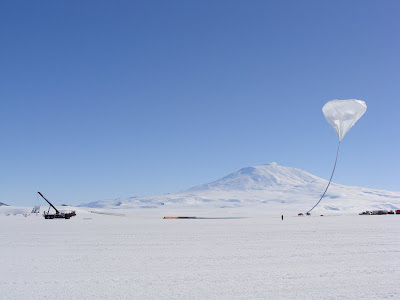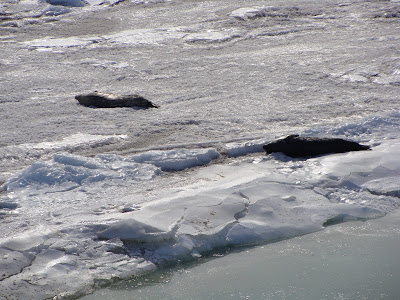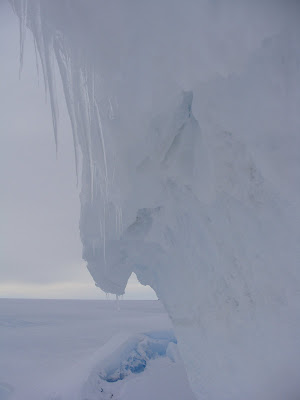Wednesday, December 31, 2008
Coming Home ????
Tonight for New Year's Eve, there is a big music festival called Ice Stock. They have a stage set up in town, and there will be live music all the usual New Year's Eve stuff. There are several other parties in town as well, so I probably won't be bored. Tomorrow I have to finish packing all of my stuff. I have what they call "bag drag" at 8:00 tomorrow night. This is when you take all of your luggage to be checked in and weighed and you confirm your flight for the next day. They have had to cancel several flights in the last few days for weather, so hopefully my flight won't get cancelled. I can't wait to get to New Zealand and be warm and see vegetation, but most of all I can't wait for it to be dark at night. I will let everyone know if I get any updates on my travel plans, but probably won't know anything else for a couple of more days.
HAPPY NEW YEAR'S!!!
Sunday, December 28, 2008
Last one down...
.
 .
.
Friday, December 26, 2008
Merry Christmas...
.
.
 .
.
Monday, December 22, 2008
Balloon Pictures...
.


Sunday, December 21, 2008
Two Down, One to Go...


Saturday, December 20, 2008
If at First You Don't Succeed....
Friday, December 19, 2008
One Down, Two to Go....

The CREAM payload hanging from the launch vehicle prior to launch - Mt Erebus in the background.

The entire flight train with the balloon being inflated.

Balloon just prior to launch

The balloon rising just after being released.

The payload being released from the launch vehicle.
Tuesday, December 16, 2008
Update...
It has been a very long and tiring week, so I have not had a lot of time to do much outside of work, but I did get an opportunity this past weekend to walk out to the end of Hut Point Peninsula. This area is only about a 3/4 mile walk from McMurdo. At the end of the peninsula is Discovery Hut. This hut was built in 1902 during one of the first expeditions to Antarctica, and is still in remarkably good condition. Much of the inside and outside is exactly how it was left 106 years ago. There are even still the mummified remains of a seal that was killed in 1902 for heat and food. The body is incredibly well preserved because of the very dry and very cold weather. Below are a few pictures from this trip. I will keep everyone updated with everything going on at work.
 Discovery Hut with Ob Hill and McMurdo Station in the background
Discovery Hut with Ob Hill and McMurdo Station in the background
 A memorial cross at the end of the peninsula. All of the men who came and built the hut eventually died trying to reach the South Pole.
A memorial cross at the end of the peninsula. All of the men who came and built the hut eventually died trying to reach the South Pole.
Tuesday, December 9, 2008
Pressure Ridges...


Penguin tracks through the snow - you can see that it was sliding on it stomach and pushing with its back feet.




Pressure ridge, with Mt Erebus (background right) and Castle Rock (background left)

Sunday, December 7, 2008
Another Hang Test...

Saturday, December 6, 2008
Pathfinder Balloon Launch...

Inflating the balloon

Releasing the balloon

The balloon ascending
Tuesday, December 2, 2008
Good Weather - Finally...

5 foot snow drift behind the building I work in

That's one of our rigging guys, Curtis, digging out the galley. The drifts on the side of the building are about 8 feet tall.
Things got back to normal at work yesterday, and we actually made quite a bit of progress towards a launch. Of course we still have to wait for the winds to properly set up, but now the CREAM payload is officially ready to be launched. Yesterday, we did a hang test on CREAM. A hang test is when we pick the payload up with the launch vehicle , hook all the electronics up, and test to make sure everything works okay. Basically the payload is hooked up and put into launch configuration - all that is missing is the balloon. The payload passed the test, and now can be launched whenever the winds set up. Below is a picture of the fully assembled CREAM payload hanging on the end of the launch vehicle. The ANITA payload is suppose to be ready for a hang test on Friday, but it looks like the weather will be too bad for that.

Saturday, November 29, 2008
Really Bad Weather
It got so bad that we actually had to leave work before they shut down all transportation. If visibilities drop below 100 ft, all transportation is shut down and you aren't even allowed to go outside. So we left work early so we didn't get trapped at work all night - after all, we didn't want to miss our big Thanksgiving dinner tonight. Things do look like they will finally improve tomorrow. Here are a couple of pictures of the storm.
Friday, November 28, 2008
Happy Thanksgiving!!!
We got about 4 inches of snow last night. That is actually a lot for down here. Much of Antarctica is actually a desert, and there are places close to here (called the Dry Valleys) where they get virtually no precipitation throughout the year. They are some of the driest places in the world, even drier than the Sahara. The 4 inches of snow was nice and actually masked some of the ugliness that is McMurdo. The downside to the snow is that today the winds really picked up. We had 45 mph winds this morning and all that snow just blows around and reduces visibility, and also creates huge snow drifts. At times this morning visibilities out on the ice were less than 100 feet, and winds about 10 miles away were about 95 mph. When conditions are that bad we cannot make the drive to work, so I actually have a day off (my first since coming down 3 weeks ago). I feel like a kid having a snow day off from school.
Hopefully I can get some pictures of the storm and post them tomorrow, although they will probably just be a lot of white.
Again, Happy Thanksgiving to all!!
Thursday, November 27, 2008
Ice Caves...

The edge of the glacier with a collection pool below it. It was very gloomy outside, so the blue of the pools didn't quite come out as well as I would have hoped.


The chute entrance to the cave with a guy I work with already at the bottom.

Ice crystal "stalactites"

A view through the cave to another entrance

Inside the main room of the cave - that is actually the color it was in there.

Wednesday, November 26, 2008
New York Times Article and other stuff...

The ANITA payload outside. They still have to add another row of antennas to the bottom and solar panels

An Adelie Penguin near Ross Island. I guy I work with actually took this picture. I have only seen 1 penguin since I have been here and didn't have my camera.
Saturday, November 22, 2008
The Payloads...


Friday, November 21, 2008
McMurdo Station...

This is Building 155. This is kind of the main hub of the station, where the mess hall is and a lot of the offices. Notice all of the mud in the foreground (and this is not much compared to warmer days)


This is my dorm. Definitely nothing fancy, but I guess it has everything you need.
Tuesday, November 18, 2008
Just Another Day...

Picture of the sea ice from the plane on the flight to Antarctica. Nothing spectacular, I just thought the pattern in the ice was really neat.

C-17 that I flew from New Zealand to Antarctica on


Very cool lenticular clouds over Ross Island near work

This is the Boss, our launch vehicle in Antarctica

